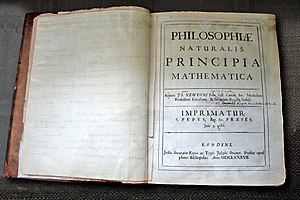Newton and the Counterfeiter: The Unknown Detective Career of the World’s Greatest Scientist by Thomas Levenson (Boston: Houghton Mifflin Harcourt, 2009), 318 pp.
In Newton and the Counterfeiter, Thomas Levenson (Head of the Graduate Program in Science Writing at MIT) tells the little known story of Sir Isaac Newton’s career as Warden of the Royal Mint. In this government position, Newton unwittingly found himself responsible for cracking down on the widespread counterfeiting of England’s coinage. His initial reluctance to take on this role of policing England’s currency was replaced in time by enthusiasm as he pursued one accomplished forger in particular, William Chaloner.
Levenson begins with Newton’s early life and his appointment at the age of 26 to the top mathematics professorship at Cambridge University. In this position, the thrifty Newton was essentially set up for life with a generous yearly stipend in exchange for one course of lectures every three terms. These minimal teaching duties practically gave him unlimited time to spend thinking and researching. After a long period of apparent inactivity, Newton eventually wrote and published one of the greatest scientific works in history, his Philosophiae naturalis principia mathematica, or The Mathematical Principles of Natural Philosophy, better known as the Principia.

- Image via Wikipedia
Levenson excels in explaining Newton’s mathematical and scientific discoveries in plain language. Within a handful of pages, Levenson managed to give me a basic understanding of calculus and the relationship between motion and gravity that all of my college math and physics classes were apparently unable to do. His description of the creation of the modern banking system is just as enlightening.
Unfortunately, in recounting Newton’s early life, Levenson unnecessarily uses several annoying narrative conceits, where his telling of the story imposes too much on the story itself. Here is one example: “Newton, just twenty-two, was working on the bleeding edge of contemporary knowledge. Now to push further.†Who is doing the pushing here? Newton? Levenson? The added quip does nothing to move the narrative along and forces the reader to stop and try to figure out what it is doing there. Levenson also has a tendency to withhold basic information and then reveal it only at the very end of a passage, perhaps in an attempt to create narrative tension where there isn’t any. Once his story gets moving, however, Levenson drops these feeble efforts at making his narrative popular in tone and allows the historical events to drive the action on their own.
In many ways, Levenson’s book is a story about creating money out of nothing. In another little-known chapter of his life, Newton dabbled in alchemy. Not surprisingly, he approached the task of turning base metals into gold with a scientific rigor that no one had used before, although like everyone else his efforts did not produce any solid results. Eventually, Newton grew tired of life in Cambridge and, with the help of some friends, gained a post at the Mint in London, which was characterized by gross neglect and general incompetence. At this point, England was just embarking on a massive recoinage project in an attempt to stop the devaluation of British currency, and Newton brought his rigorous analytic methods to the management of this project with spectacular results.

- Image via Wikipedia
In his new government position, Newton also came up against William Chaloner, a career counterfeiter who openly challenged Newton and the policies of the Mint in two published pamphlets. Chaloner had already had several brushes with the law where he was accused of clipping and forging coins, but he had always been able to turn in fellow conspirators in exchange for his freedom. Full of confidence, Chaloner published his critical pamphlets as part of an elaborate scheme to gain a post at the Mint, or at the very least to witness first-hand the machines used to produce the official coins.
Detailed information about criminal cases in the seventeenth and eighteenth centuries is hard to come by, and Levenson uses the resources available to him to full advantage. He benefits from Newton’s meticulous recording of his thoughts and actions into ledgers and journals. He also relies on Chaloner’s two published pamphlets and a fairly detailed biography of the forger that appeared shortly after his death. Through these sources, Levenson gains unusual insight into a seventeenth-century criminal case and how Newton approached his role as a criminal prosecutor.
Readers who pick up Levenson’s book because they are intrigued by the notion that Newton may just well be England’s first detective will strike gold. Levenson’s book not only offers an engaging account of Isaac Newton’s pursuit of William Chaloner, but it effortlessly educates the reader in a wide range of scientific, economic, and criminal subjects that characterize late seventeenth-century England, subjects that continue to have a profound effect on our modern society today.
Don’t forget to visit the Early American Crime Bookshop.








Post a Comment